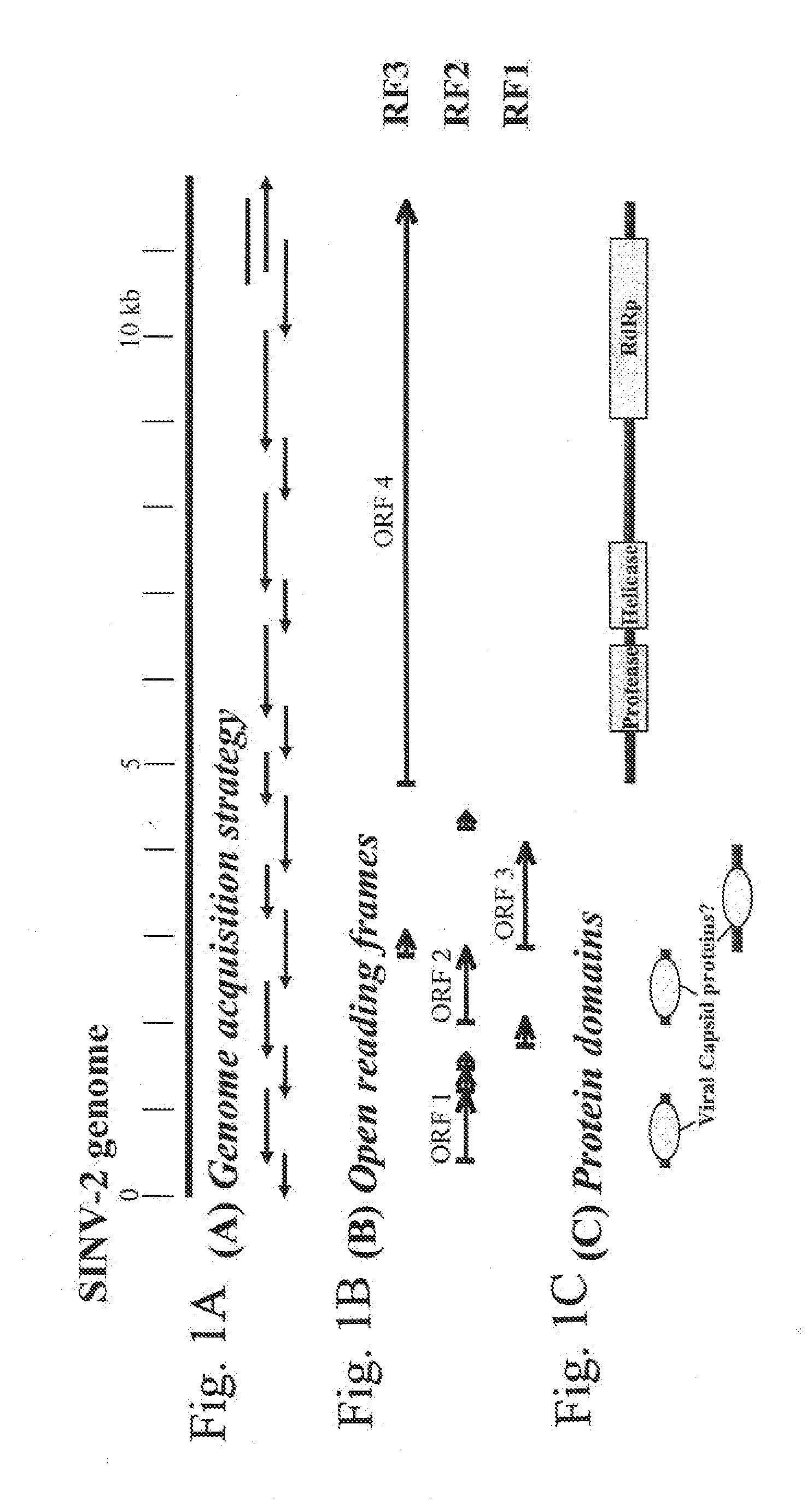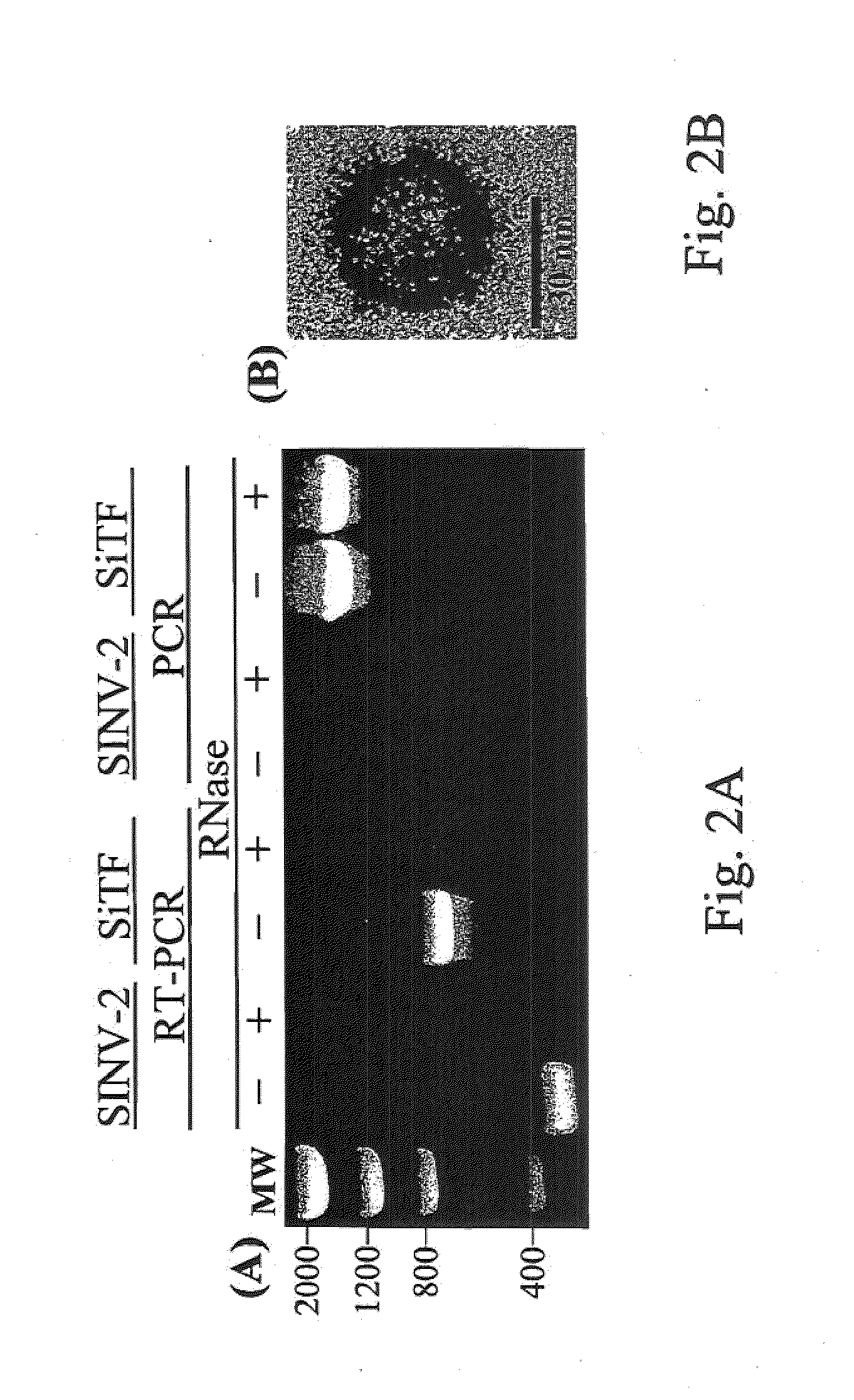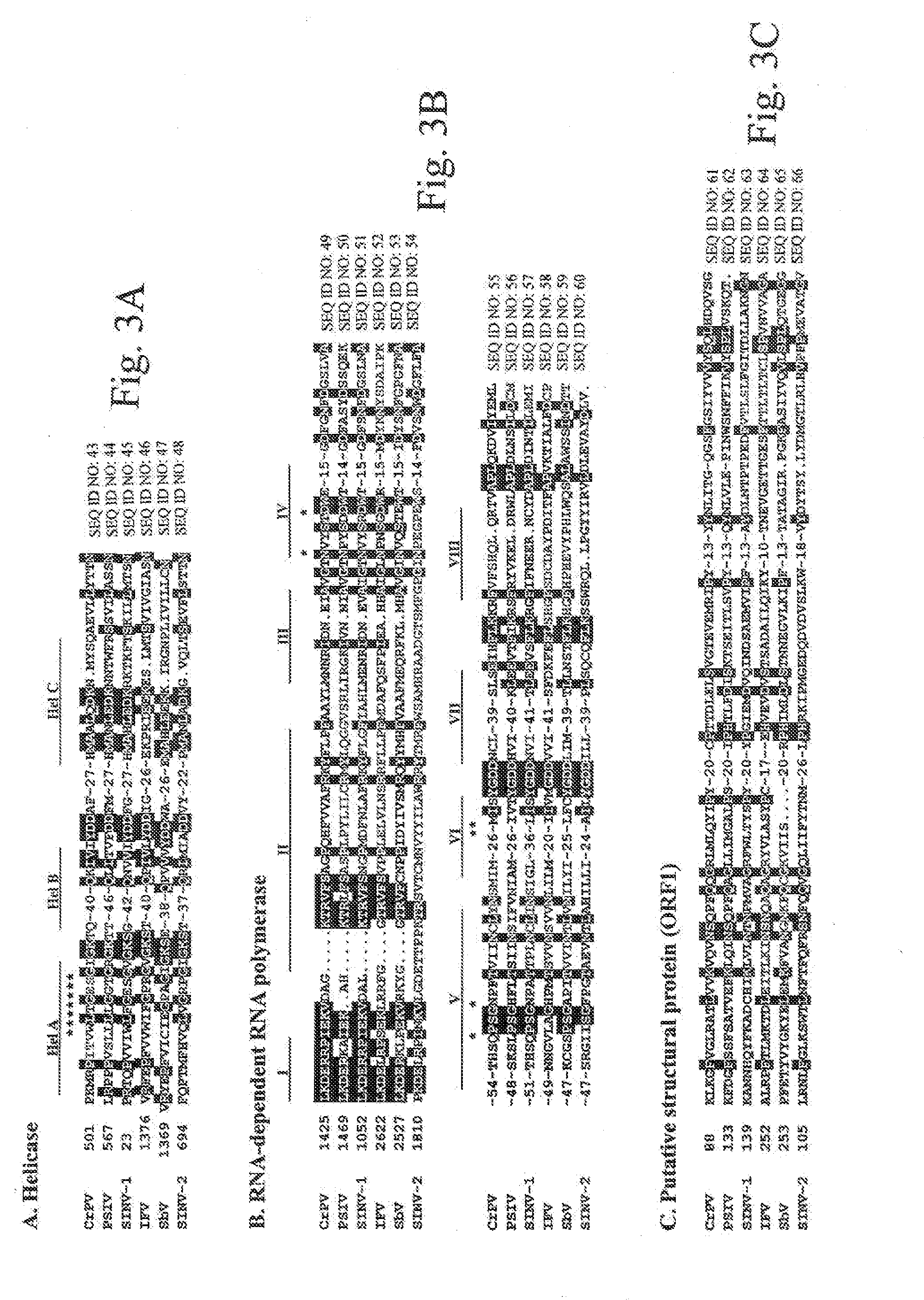Solenopsis invicta Virus
a technology of solenopsis and invicta, applied in the field of biological methods and products, can solve the problems of fire ants, wildlife, nesting birds and animals, and damage to farm equipment,
- Summary
- Abstract
- Description
- Claims
- Application Information
AI Technical Summary
Benefits of technology
Problems solved by technology
Method used
Image
Examples
example 1
[0045]A one-step reverse transcriptase polymerase chain reaction (RT-PCR) was used to identify SINV-2-infected S. invicta ants. A 20 ml scintillation vial was plunged into a fire ant mound in the field for several minutes to collect a sample of the worker caste. The ants were returned to the laboratory and RNA was extracted from about 10-20 ants using TRIZOL reagent according to the manufacturer's directions (Invitrogen, Carlsbad, Calif.). cDNA was synthesized and subsequently amplified using the One-Step RT-PCR kit (Invitrogen) with oligonucleotide primers p64-SEQ ID NO: 2 and 65 SEQ ID NO: 3 (Table 1). Samples were considered positive for the virus when a visible amplicon (about 319 nucleotides) was present after separation on about a 1.2% agarose gel stained with ethidium bromide. RT-PCR was conducted in a PTC 100 thermal cycler (MJ Research, Waltham, Mass.) under the following optimized temperature regime:[0046]1 cycle at about 45° C. for about 30 minutes;[0047]1 cycle at about ...
example 2
[0060]A field survey was conducted to examine the extent of the SINV-2 infection among S. invicta nests from locations in and around Gainesville, Fla. Samples of workers were retrieved from the field and treated as described above in Example 1. SINV-2-specific oligonucleotide primers p64 SEQ ID NO: 2 and p65 SEQ ID NO: 3 were used in an RT-PCR reaction to determine the presence of infection. In an effort to determine possible ant social form-specificity of SINV-2, each nest that tested positive for SINV-2 was also genotyped at the Gp-9 locus to determine the social form of the nest (Valles and Porter Insectes Soc., Volume 50, 199-200, 2003).
[0061]Experiments were conducted to determine if the virus was present in different developmental stages. Samples of queens workers, early instars (1st and 2nd), late instars (3rd and 4th), eggs, and pupae were sampled directly from the field from SINV-2-positive colonies. All samples were analyzed for infection by the RT-PCR method.
[0062]Among 2...
example 3
[0063]SINV-2-uninfected laboratory-reared monogyne colonies were identified by RT-PCR and divided into 4 equivalent fragment colonies comprised of about 0.5 grams of brood and about 4 ml of workers. Colonies were infected by a modified method described by Ackey and Beck (J. Insect. Physiol, Volume 18, 1901-1914, 1972). Workers and brood , approximately 0.15 gram, from a SINV-2-infected colony were homogenized in an equal volume of approximately 10% sucrose. The homogenate was filtered through 4 layers of cheesecloth. Approximately 4 ml of the homogenate / sucrose solution was placed into a cotton-stopped test tuve and presented to 3 of the 4 fragment colonies; one fragment colony was provided a homogenate of uninfected ants and served as control. After about 2 days, the homogenate was removed and replaced with unadulterated 10% sucrose, water, frozen crickets (Acheta domesticus) and egg yolk (hard boiled). Three replicates were conducted comprised of three colonies each that had been ...
PUM
| Property | Measurement | Unit |
|---|---|---|
| diameter | aaaaa | aaaaa |
| pH | aaaaa | aaaaa |
| volume | aaaaa | aaaaa |
Abstract
Description
Claims
Application Information
 Login to View More
Login to View More - R&D
- Intellectual Property
- Life Sciences
- Materials
- Tech Scout
- Unparalleled Data Quality
- Higher Quality Content
- 60% Fewer Hallucinations
Browse by: Latest US Patents, China's latest patents, Technical Efficacy Thesaurus, Application Domain, Technology Topic, Popular Technical Reports.
© 2025 PatSnap. All rights reserved.Legal|Privacy policy|Modern Slavery Act Transparency Statement|Sitemap|About US| Contact US: help@patsnap.com



